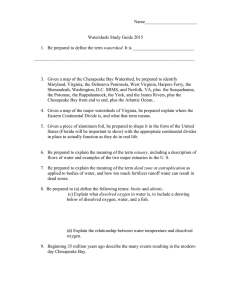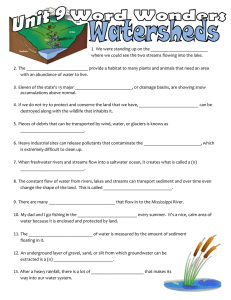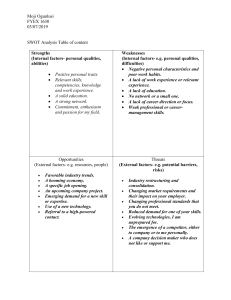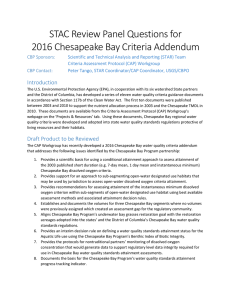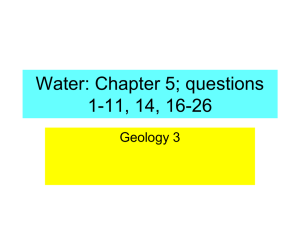Study Guide for the Watersheds Test Ecosystem-
advertisement
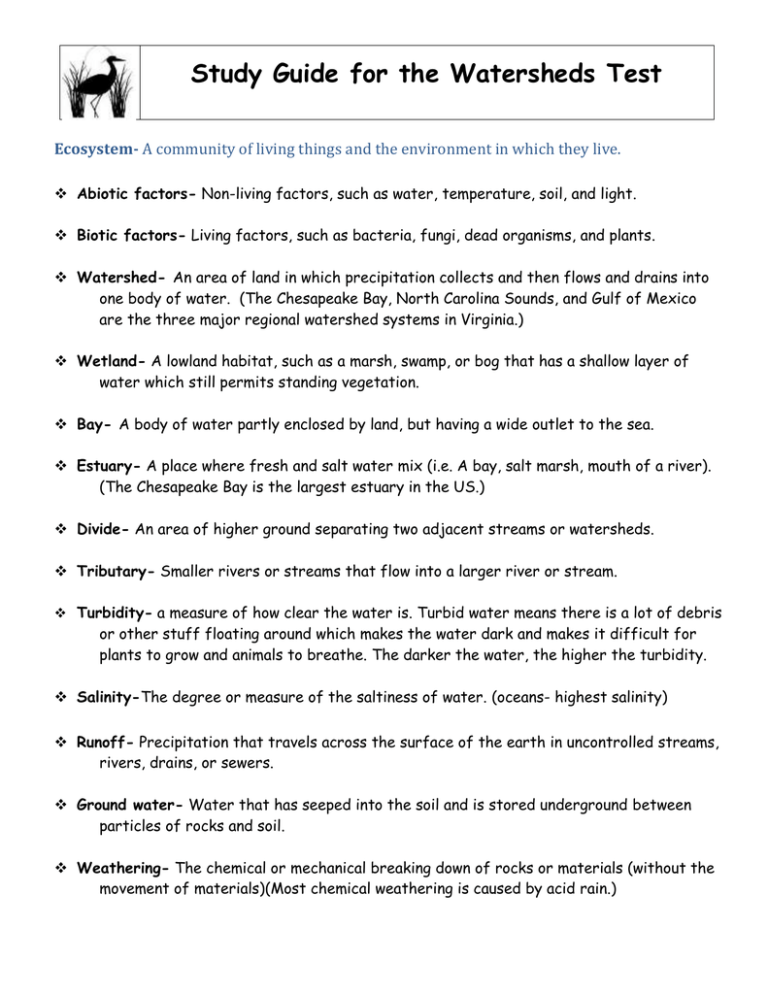
Study Guide for the Watersheds Test Ecosystem- A community of living things and the environment in which they live. Abiotic factors- Non-living factors, such as water, temperature, soil, and light. Biotic factors- Living factors, such as bacteria, fungi, dead organisms, and plants. Watershed- An area of land in which precipitation collects and then flows and drains into one body of water. (The Chesapeake Bay, North Carolina Sounds, and Gulf of Mexico are the three major regional watershed systems in Virginia.) Wetland- A lowland habitat, such as a marsh, swamp, or bog that has a shallow layer of water which still permits standing vegetation. Bay- A body of water partly enclosed by land, but having a wide outlet to the sea. Estuary- A place where fresh and salt water mix (i.e. A bay, salt marsh, mouth of a river). (The Chesapeake Bay is the largest estuary in the US.) Divide- An area of higher ground separating two adjacent streams or watersheds. Tributary- Smaller rivers or streams that flow into a larger river or stream. Turbidity- a measure of how clear the water is. Turbid water means there is a lot of debris or other stuff floating around which makes the water dark and makes it difficult for plants to grow and animals to breathe. The darker the water, the higher the turbidity. Salinity-The degree or measure of the saltiness of water. (oceans- highest salinity) Runoff- Precipitation that travels across the surface of the earth in uncontrolled streams, rivers, drains, or sewers. Ground water- Water that has seeped into the soil and is stored underground between particles of rocks and soil. Weathering- The chemical or mechanical breaking down of rocks or materials (without the movement of materials)(Most chemical weathering is caused by acid rain.) Erosion- Process by which earth material is moved from one area to another by water or wind. (Erosion can be slowed down by planting more vegetation.) Sediment- Materials such as rock fragments and grains that have been transported by wind, water, or glaciers. Deposit- Loose sediment that builds up after water in a river loses energy (slows down) and can't carry it any further. (When the flow of water decreases in speed, the size of the sediment it can carry decreases in size). Floodplain- A low plain next to a river that is created from river sediment and is sometimes flooded. Meander- When something follows a winding and turning course. Mouth of a River- opposite end of a river from its source (where it began). Divide *Remember to always study all of your notes and handouts in your science notebook

